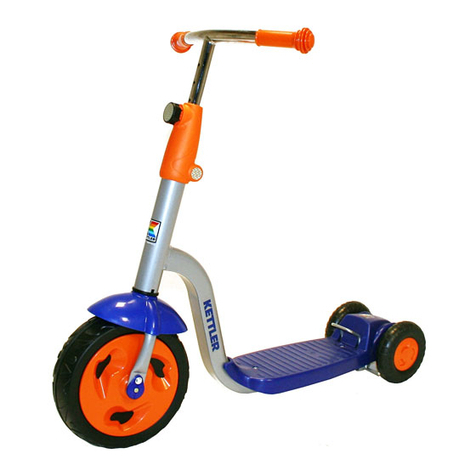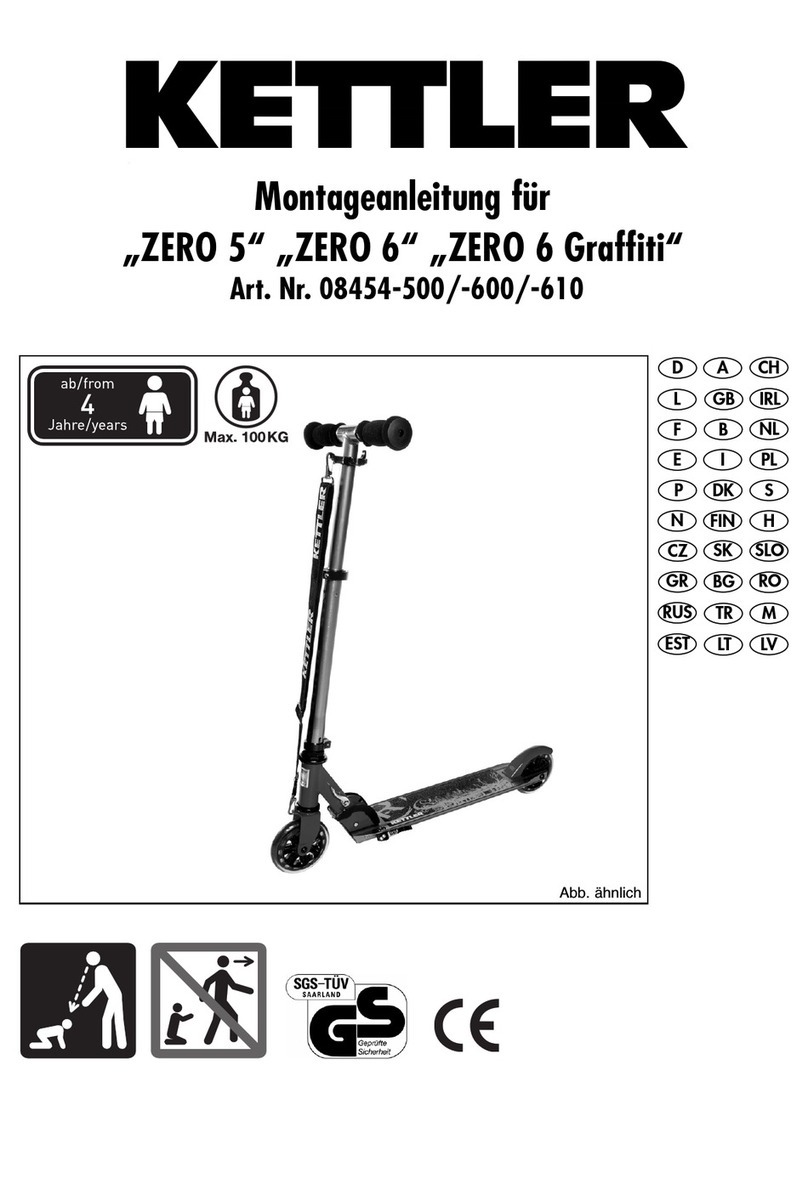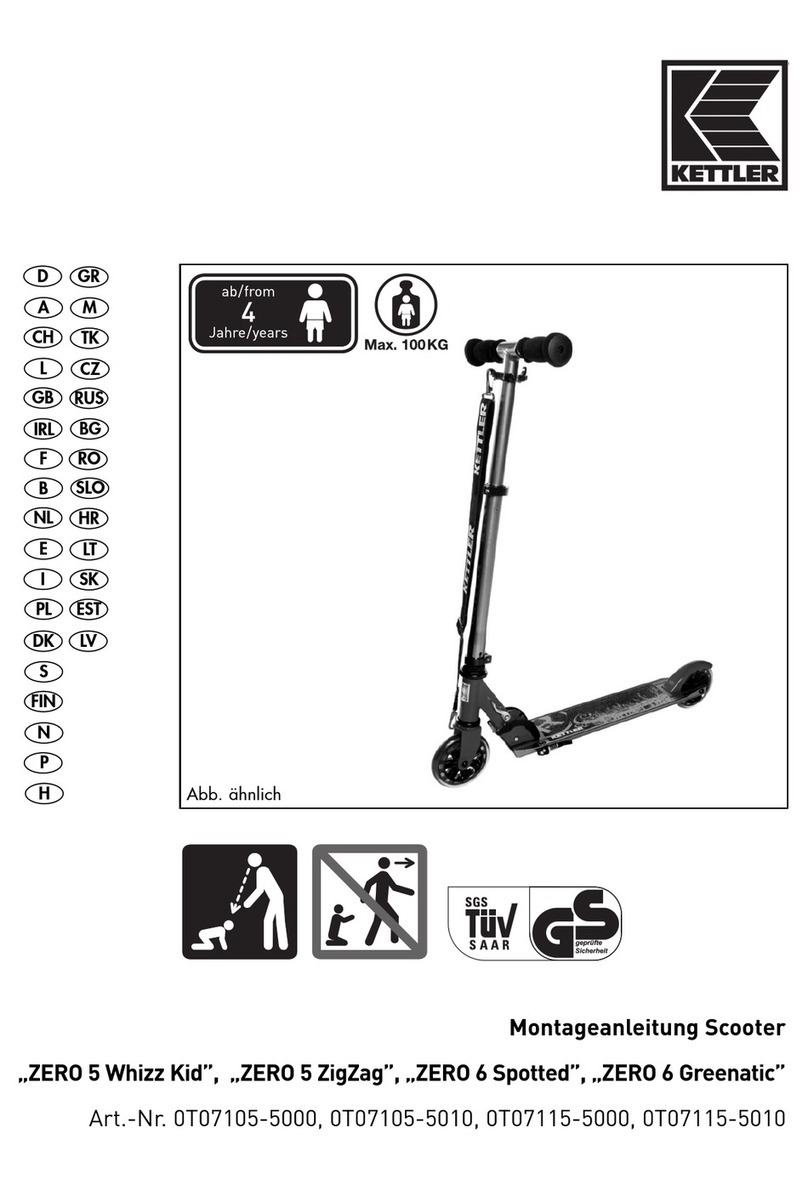
MY20K03-2_1.0_18.07.2019 2
Contents
5.3.4.1 Wheel with quick release (15 mm) 36
5.3.4.2 Adjusting the FOX quick release 37
5.3.4.3 Installing the wheel with Kabolt axles 37
5.3.4.4 Checking the stem and handlebars 37
5.3.5 Pedelec sale 38
6Operation 39
6.1 Risks and hazards 39
6.1.1 Tips for a greater range 40
6.1.2 Personal protective equipment 40
6.2 Error messages 41
6.3 Battery error message 41
6.4 Warning message 42
6.5 Error message screen 43
6.6 Before the first ride 44
6.6.1 Adjusting the saddle 44
6.6.1.1 Adjusting the saddle tilt 44
6.6.2 Determining the seat height 44
6.6.2.1 Adjusting the seat height with quick
release 44
6.6.2.2 Height-adjustable seat post 45
6.6.2.3 Adjusting the seat position 45
6.6.3 Adjusting the handlebars 46
6.6.3.1 Adjusting the stem 46
6.6.3.2 Adjusting the height of the handlebars 46
6.6.3.3 Turning the handlebars to the side 47
6.6.3.4 Checking the clamping force in quick
releases 47
6.6.3.5 Adjusting the quick release clamping
force 47
6.6.4 Adjusting the brake lever 47
6.6.4.1 Adjusting the pressure point on a
Magura brake lever 47
6.6.4.2 Adjusting the grip distance 48
6.6.4.3 Adjusting the grip distance on a
Magura brake lever 48
6.6.5 Adjusting the suspension of the
Suntour fork 49
6.6.5.1 Adjusting the negative deflection 49
6.6.5.2 Adjusting the air suspension fork
negative deflection 49
6.6.5.3 Adjusting the steel suspension fork
negative deflection 50
6.6.5.4 Adjusting the rebound 51
6.6.6 Adjusting the suspension of the
FOX fork 51
6.6.6.1 Adjusting the negative deflection 51
6.6.6.2 Adjusting the rebound 52
6.6.7 Setting the Suntour rear frame damper 53
6.6.7.1 Adjusting the negative deflection 53
6.6.7.2 Adjusting the rebound 53
6.6.7.3 Setting the compression 54
6.6.8 Setting the FOX rear frame damper 54
6.6.8.1 Adjusting the negative deflection 54
6.6.8.2 Adjusting the rebound 55
6.6.9 Retracting the brake linings 55
6.7 Accessories 56
6.7.1 Child seat 56
6.7.2 Bicycle trailers 57
6.7.3 Pannier rack 57
6.8 Before each ride 58
6.9 Check list before each ride 58
6.10 Using the kickstand 59
6.10.1 Raising the kickstand 59
6.10.1.1 Parking the pedelec 59
6.11 Using the pannier rack 59
6.12 Rechargeable battery 60
6.12.1 Side down tube battery 61
6.12.1.1 Inserting the battery 61
6.12.1.2 Removing the battery 61
6.12.2 Charging the battery 62
6.13 Electric drive system 64
6.13.1 Switching on the drive system 64
6.13.2 Switching off the drive system 64
6.13.3 Display 65
6.13.4 Using the riding light 65
6.13.5 Using the push assist system 65
6.13.5.1 Select WALK level of assistance 65
6.13.5.2 Switching on the push assist 65
6.13.5.3 Exit WALK level of assistance 66
6.13.5.4 Selecting the level of assistance 66
6.13.6 Switching the journey information 66
6.13.6.1 Clearing the displayed distance
travelled 66
6.13.6.2 Opening the settings menu 66
6.13.6.3 Closing the settings menu 67
6.13.6.4 Deleting the journey information 67
6.13.6.5 Setting the clock 67
6.13.6.6 Changing the backlight 67
6.13.6.7 Changing the brightness 68
6.13.6.8 Changing the beep sound 68
6.13.6.9 Change the units 68
6.13.6.10Changing the language 68
6.13.6.11Changing the font colour 69
6.13.6.12Setting the gear shift 69
6.13.6.13Rear derailleur reset 69
6.14 Brake 70
6.14.1 Using the brake lever 71
6.14.2 Using the back-pedal brake 72
6.14.3 Using ABS 72
6.14.3.1 While riding 73
6.15 Suspension and damping 73
6.15.1 Adjusting the compression of the
Fox fork 73






































